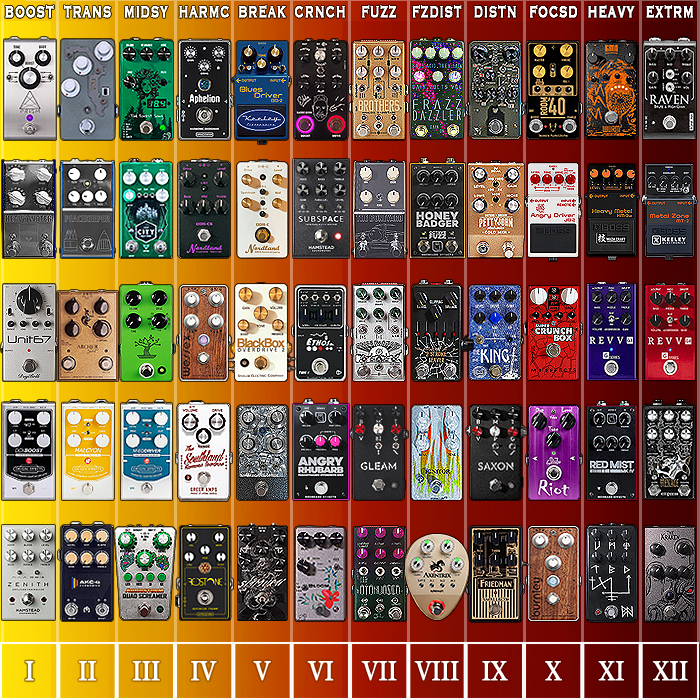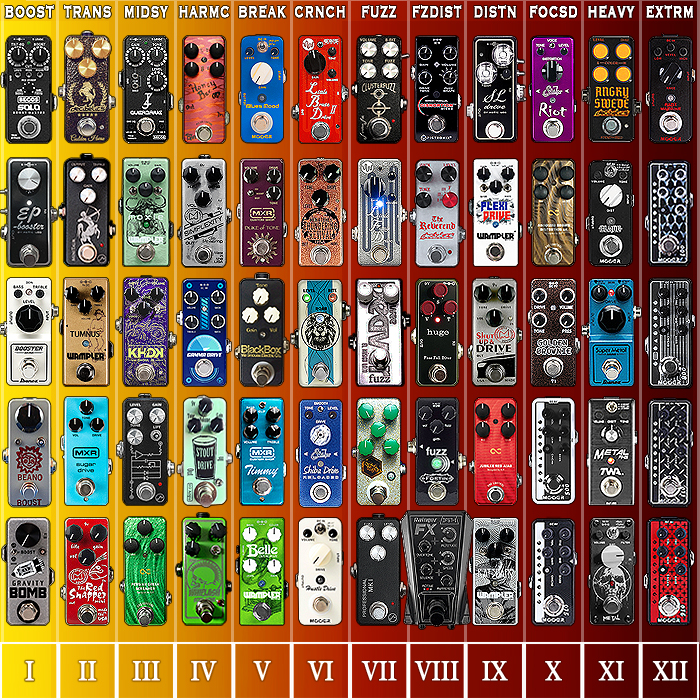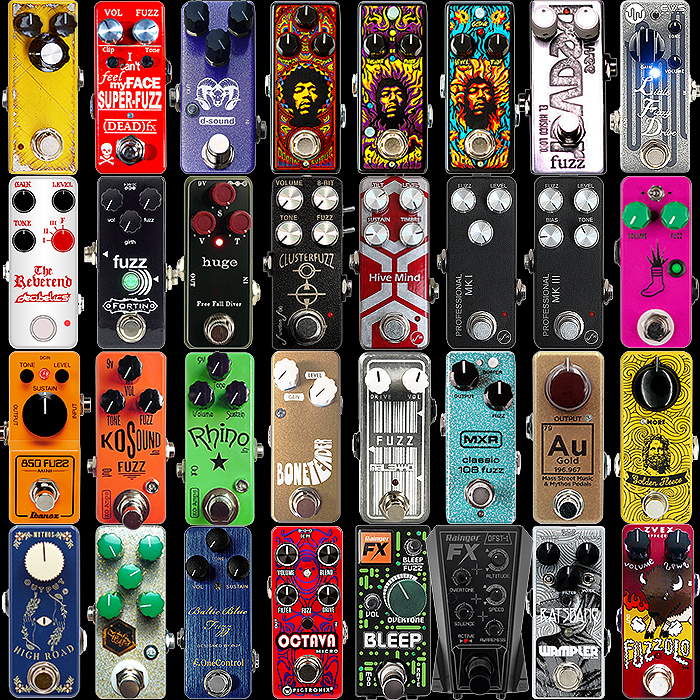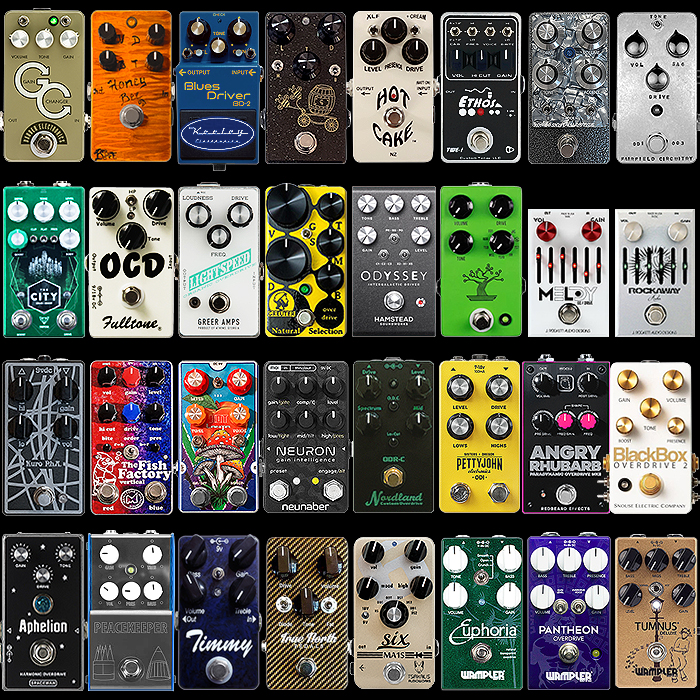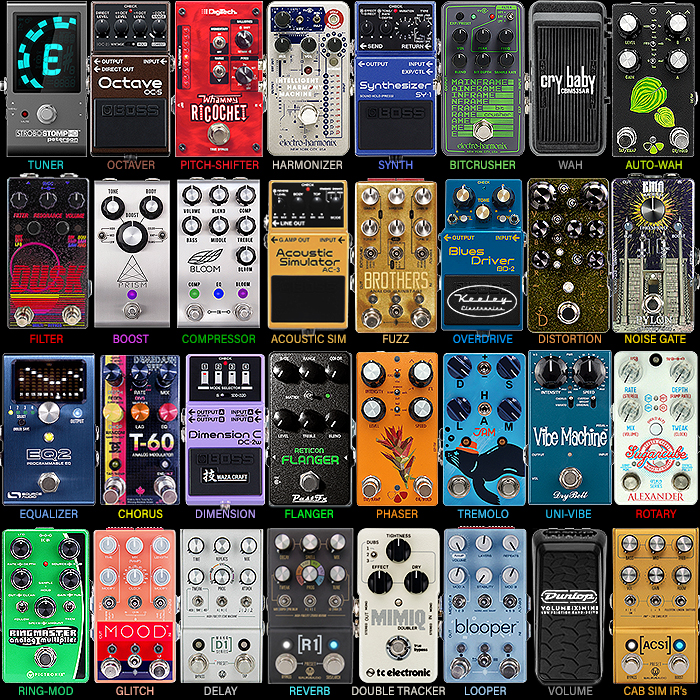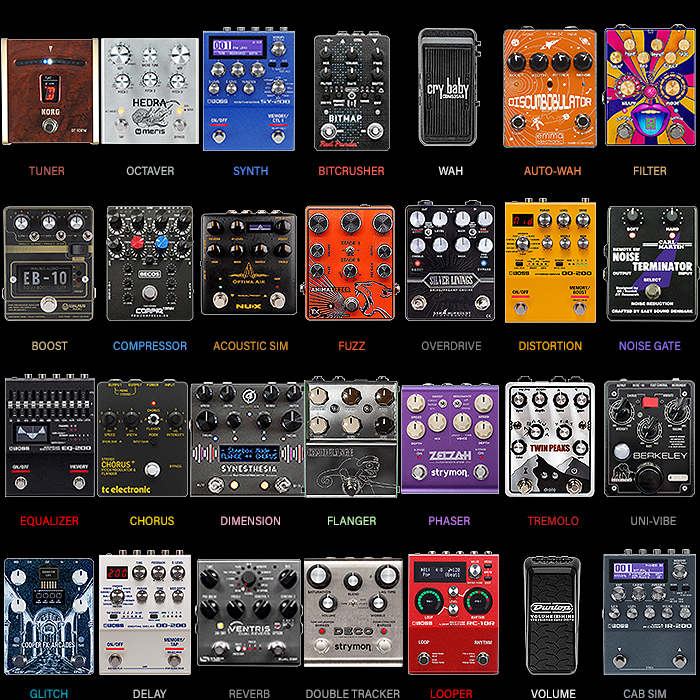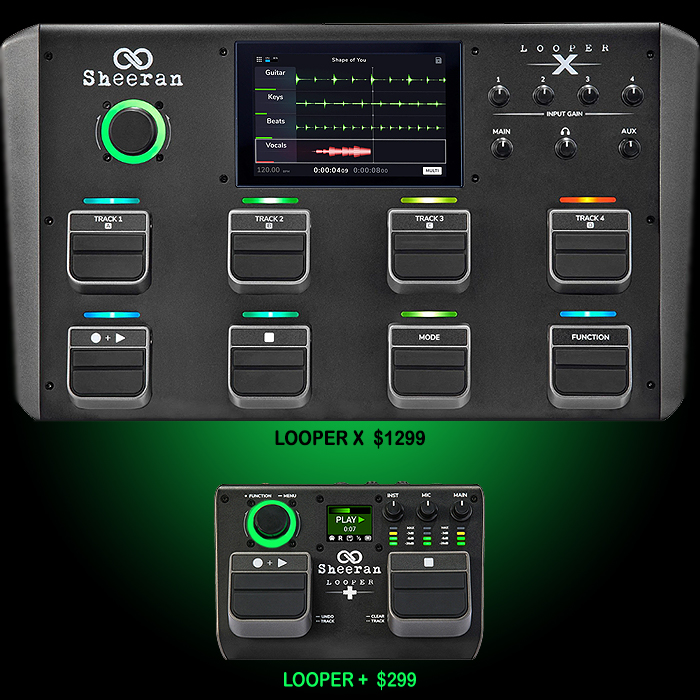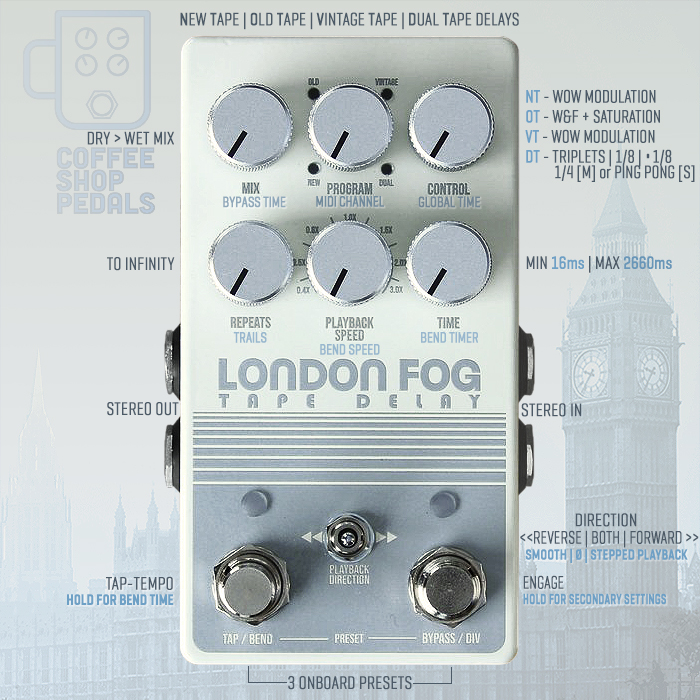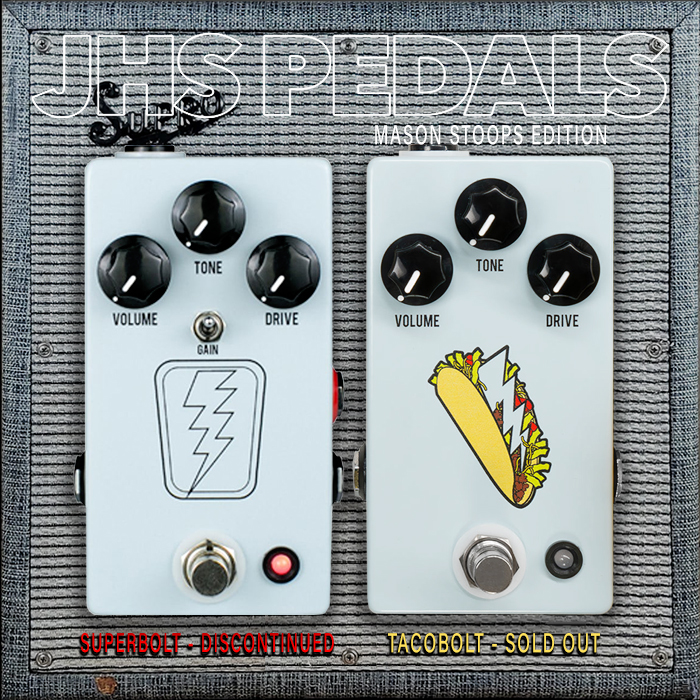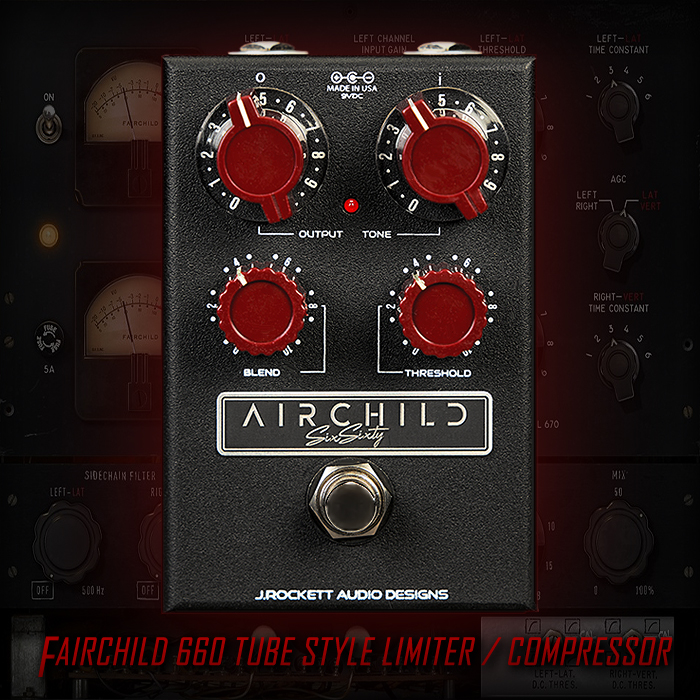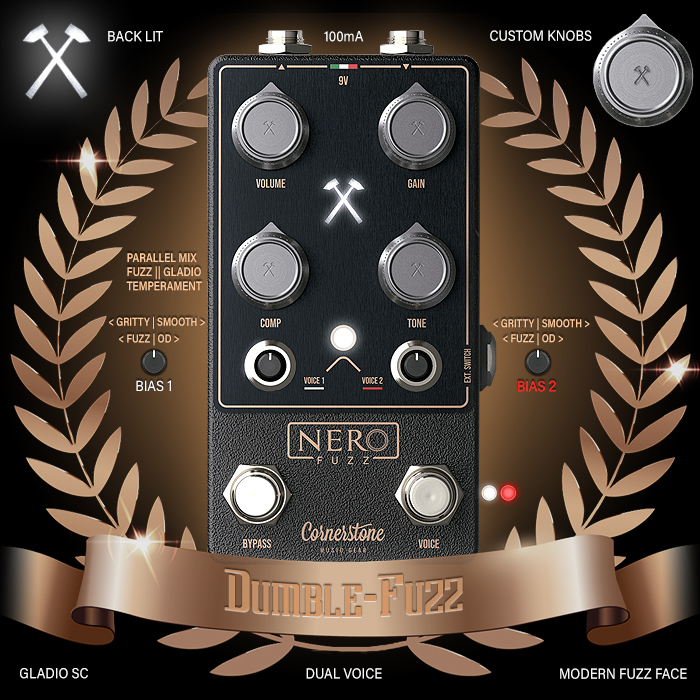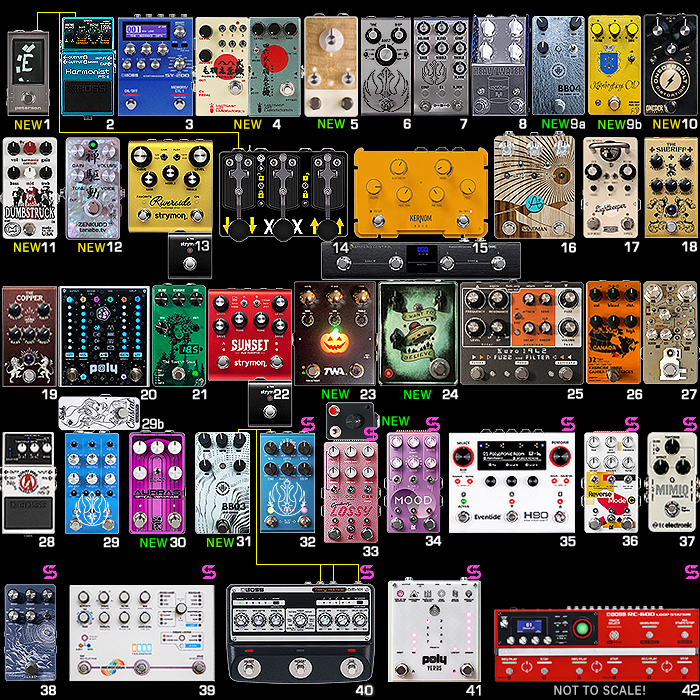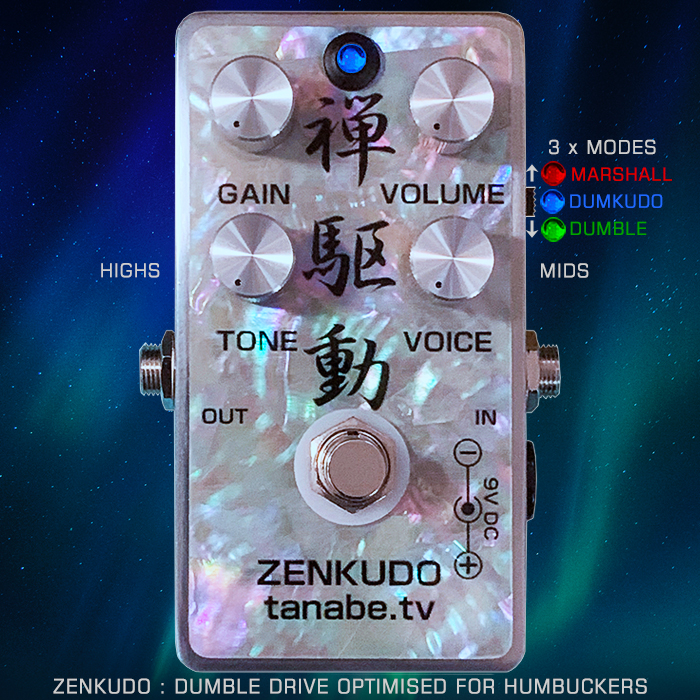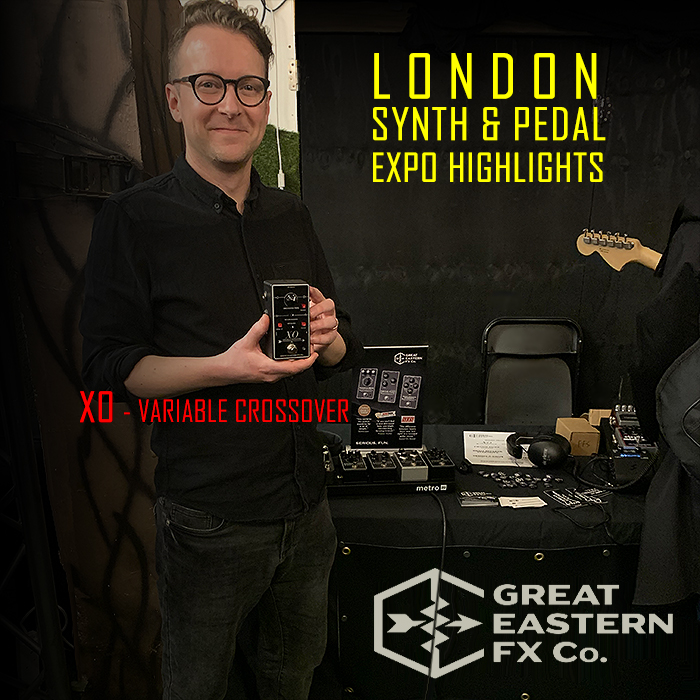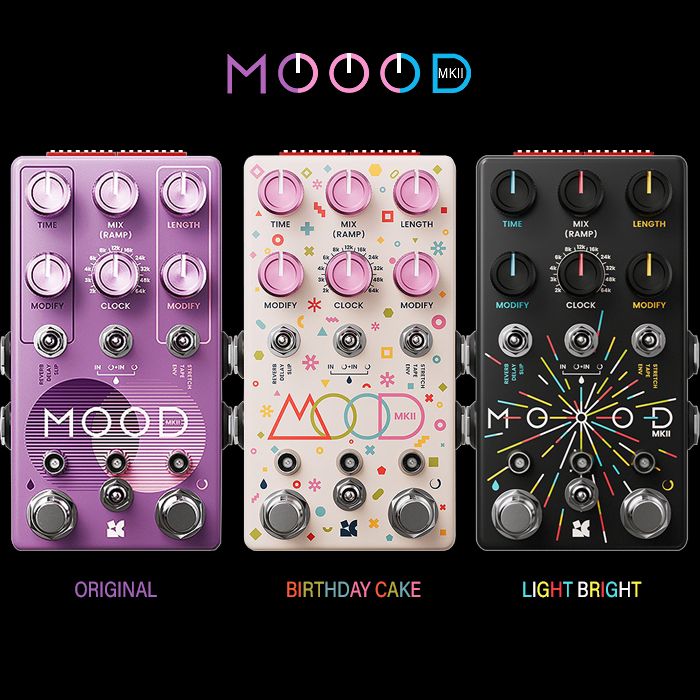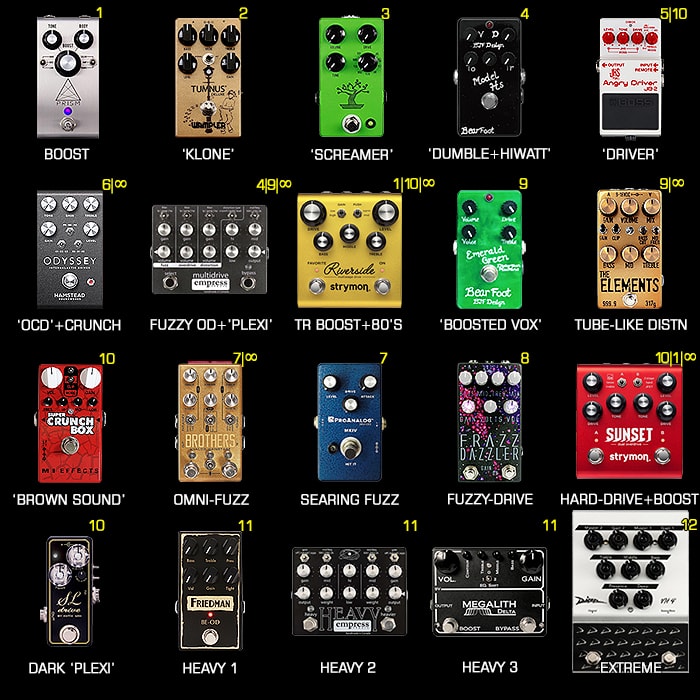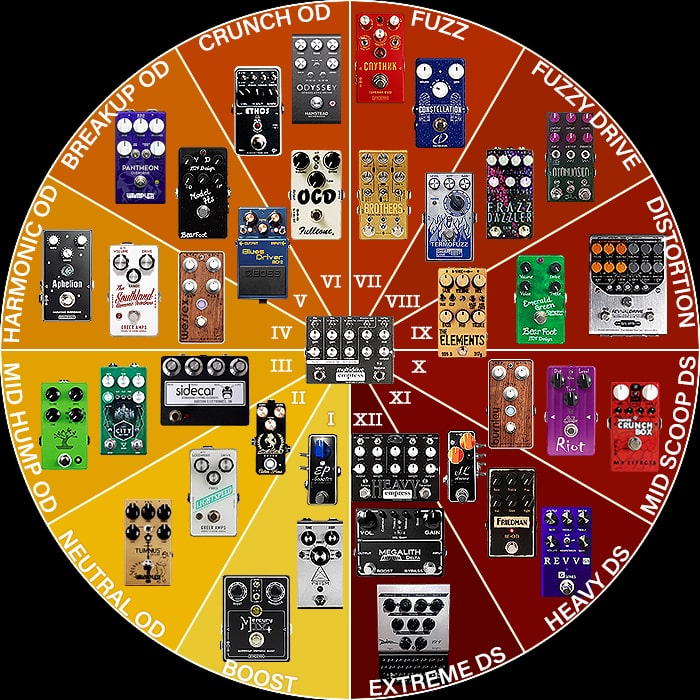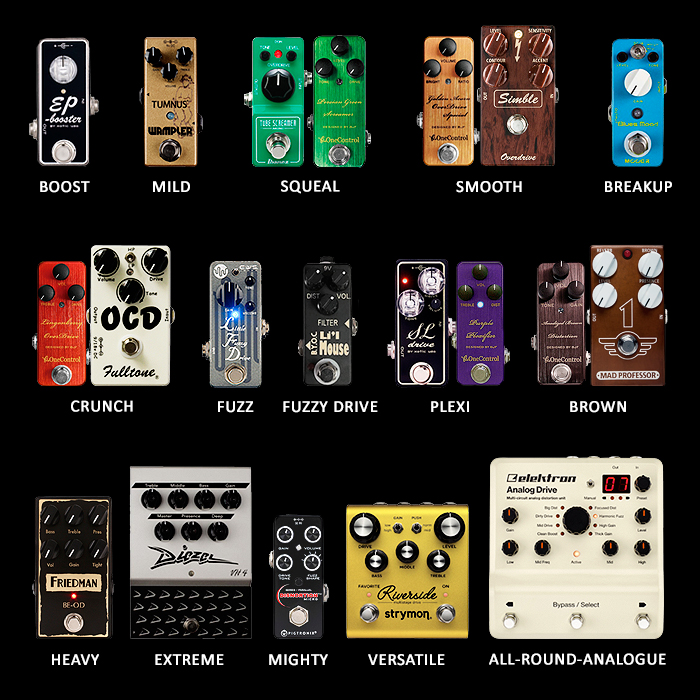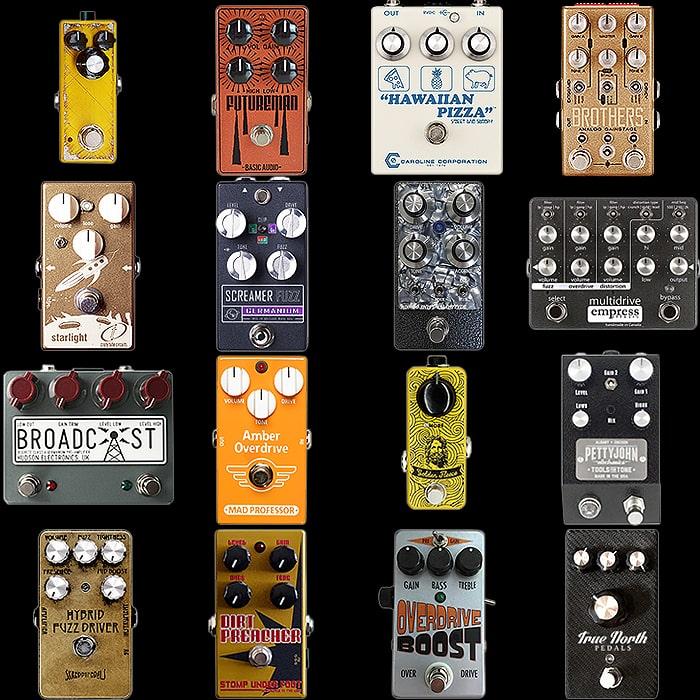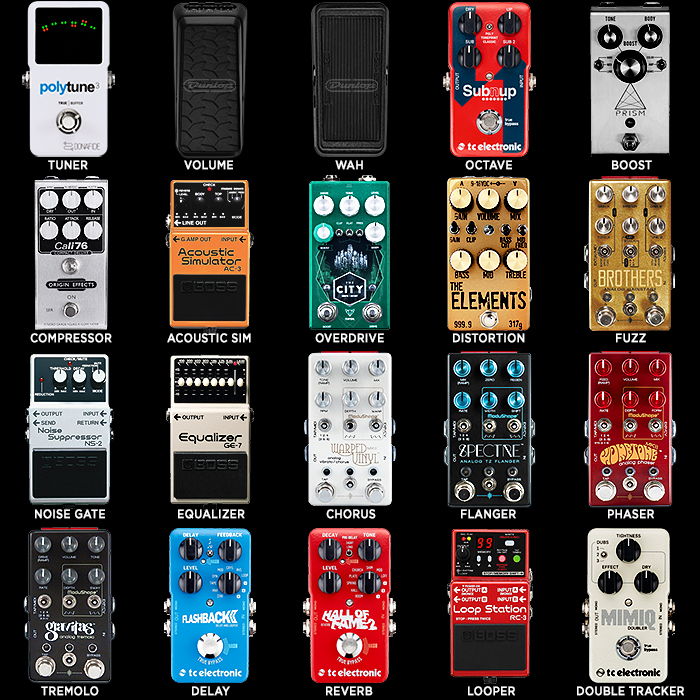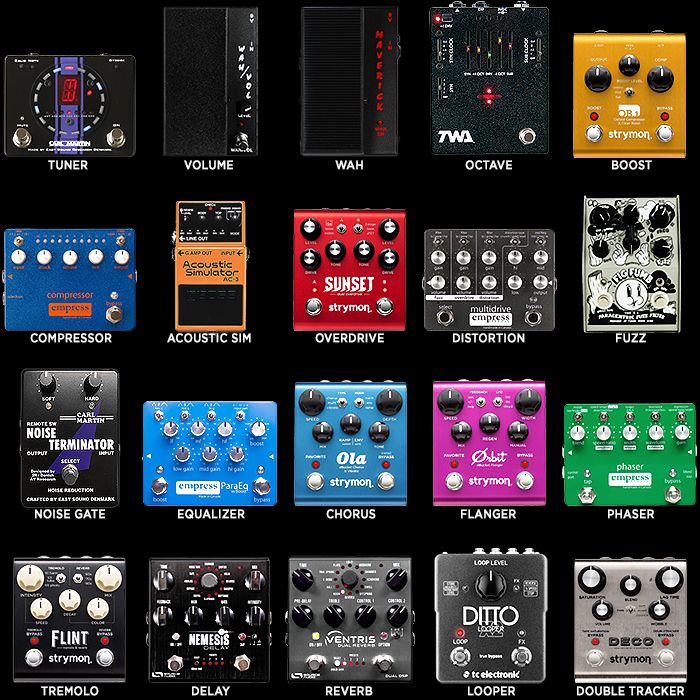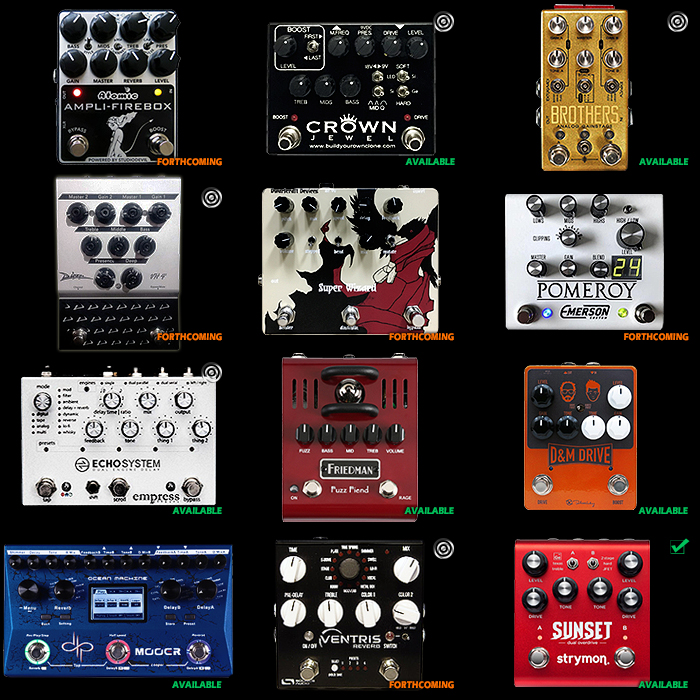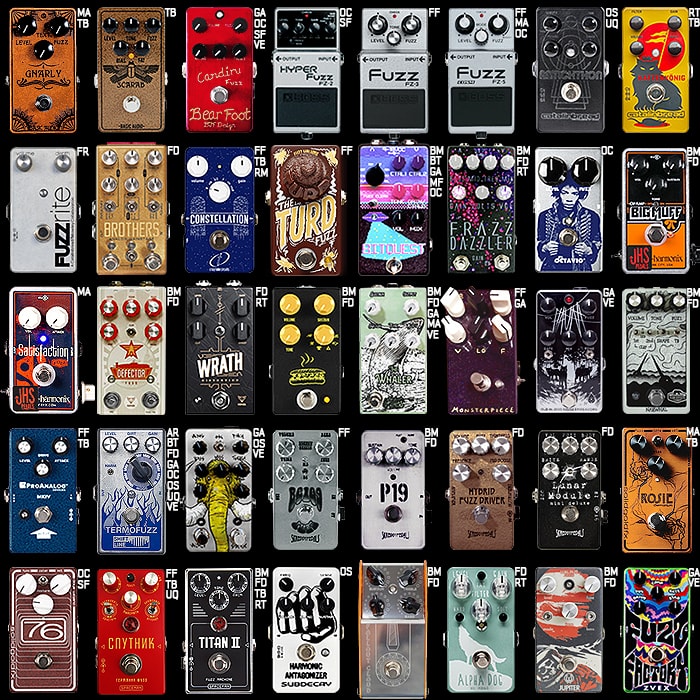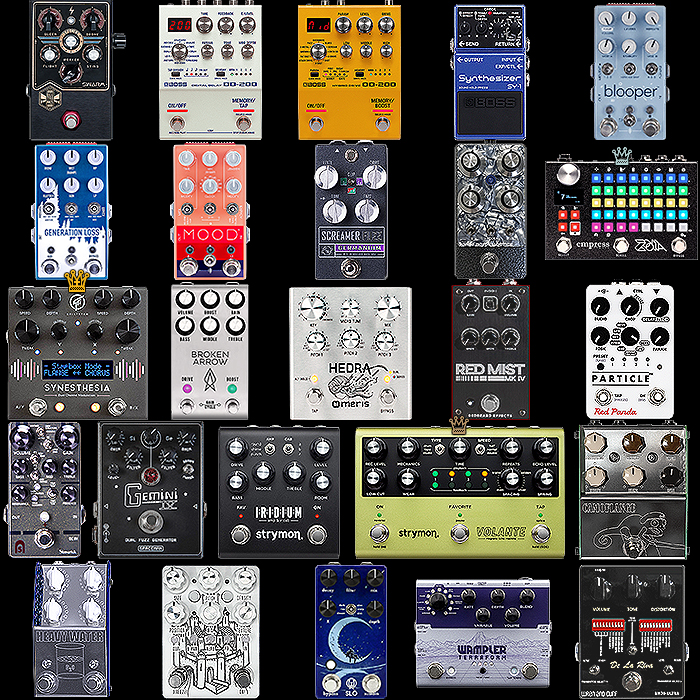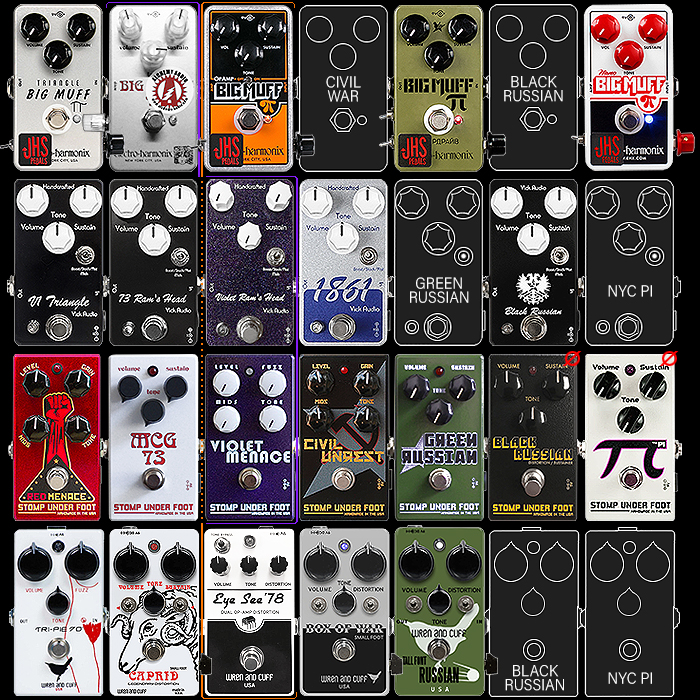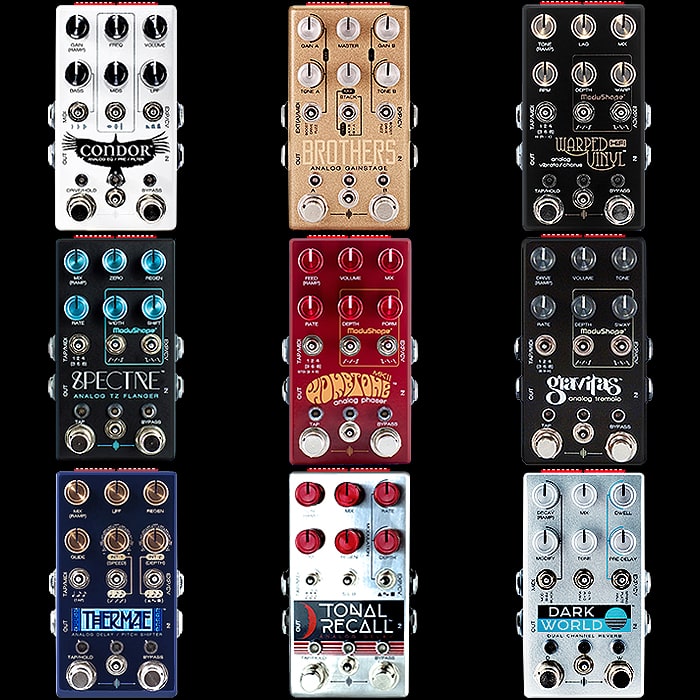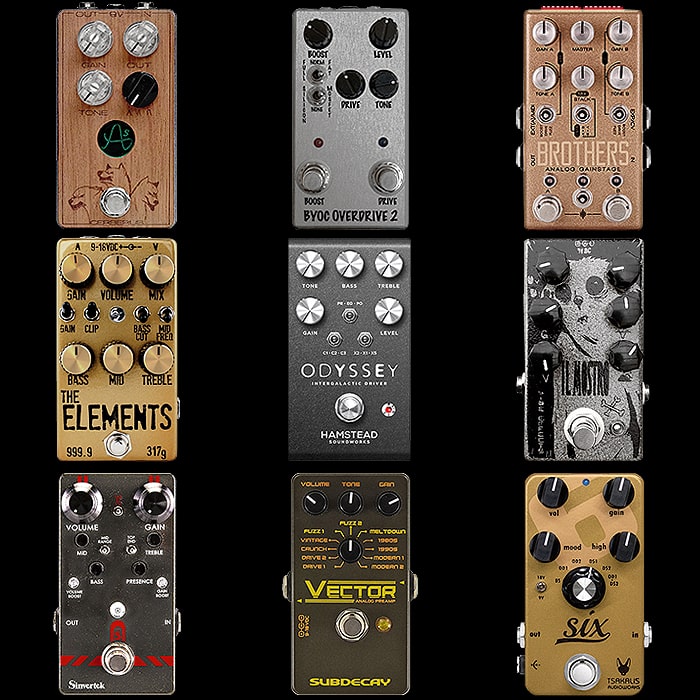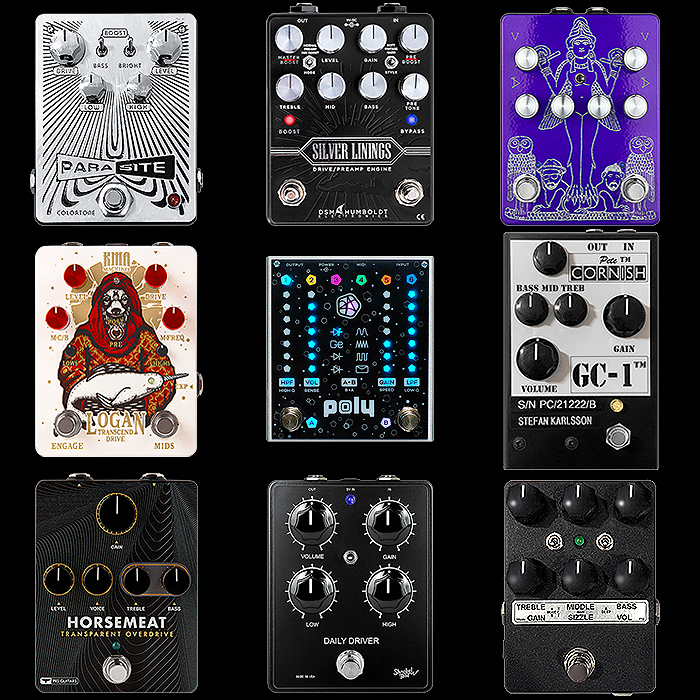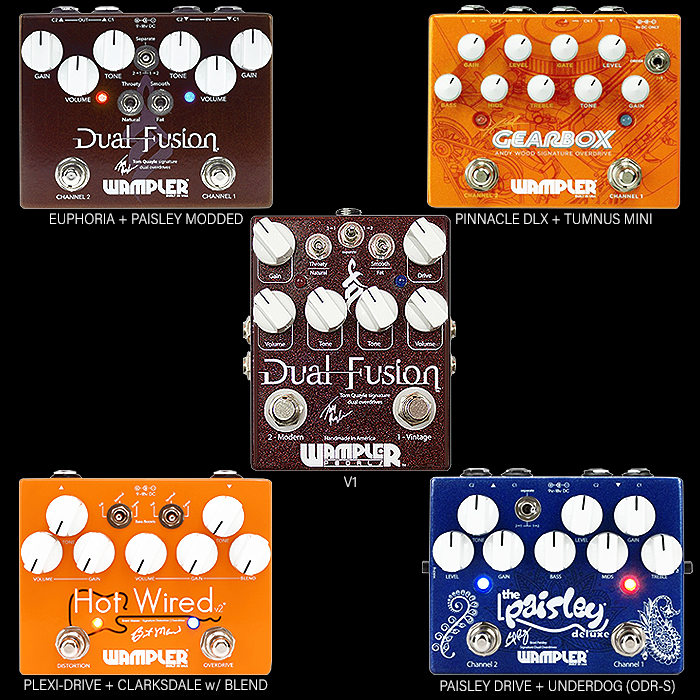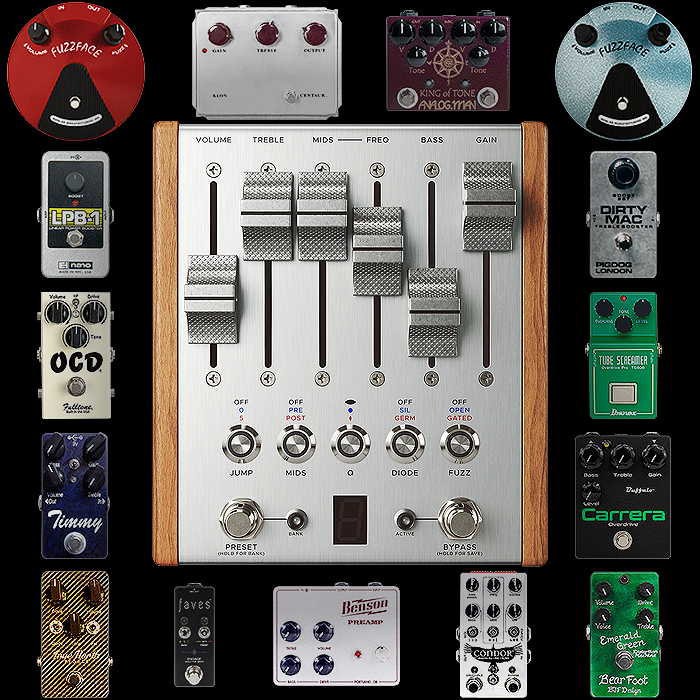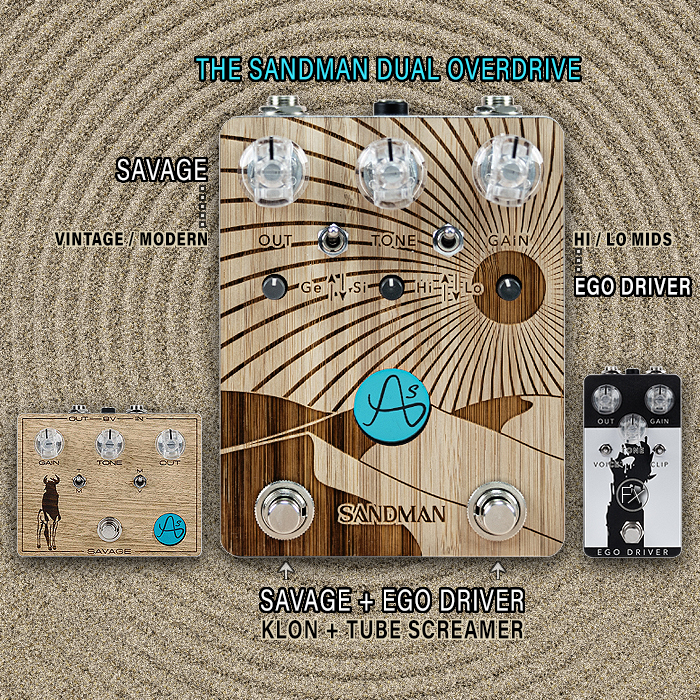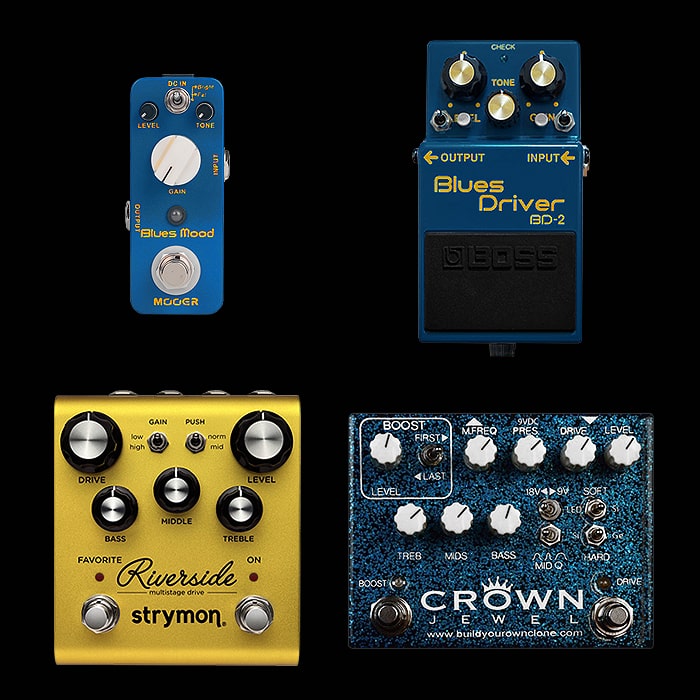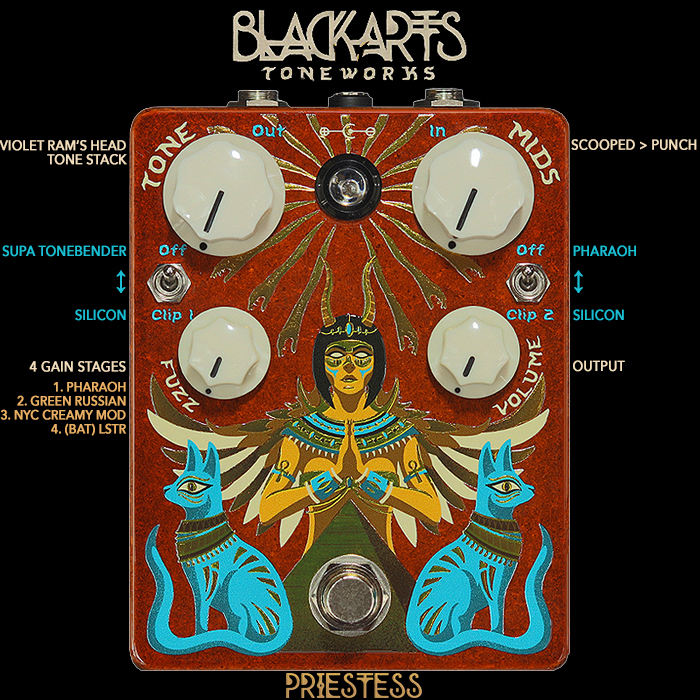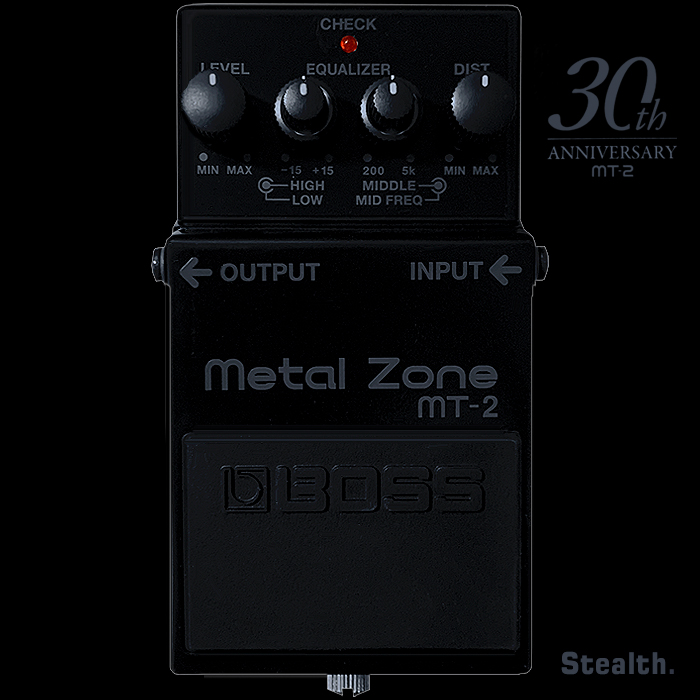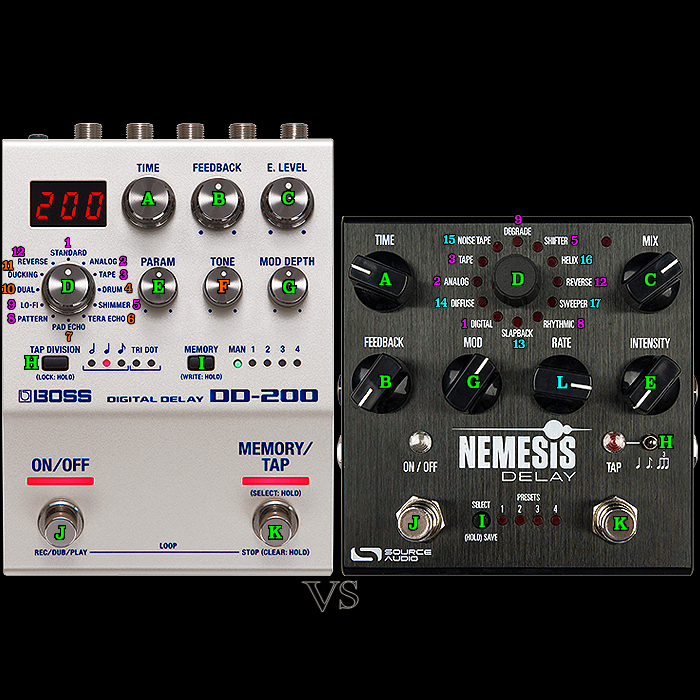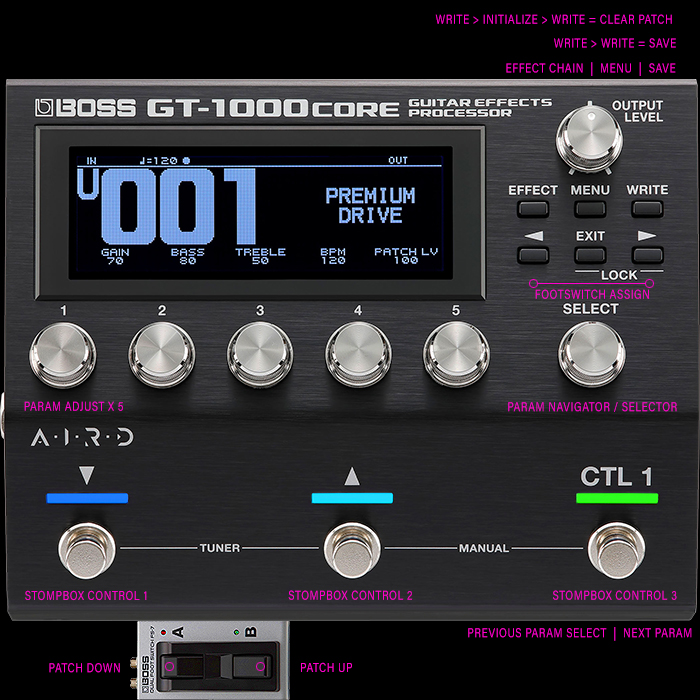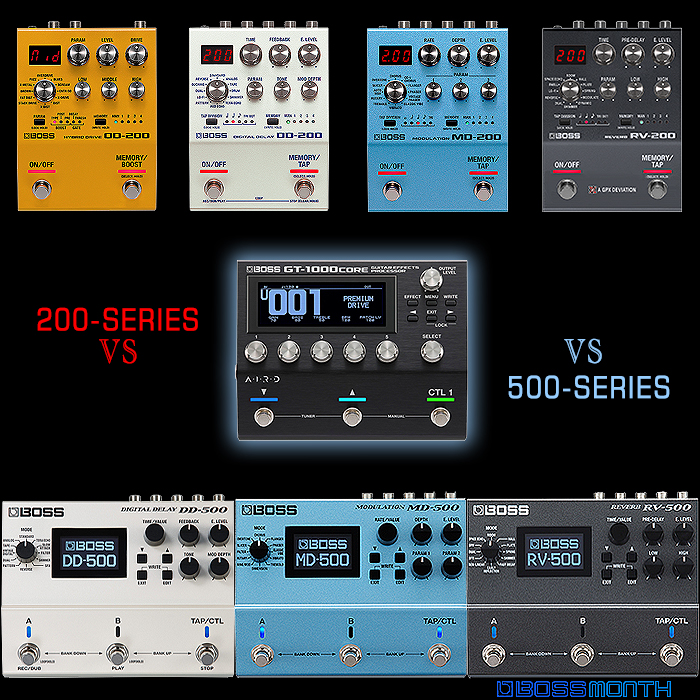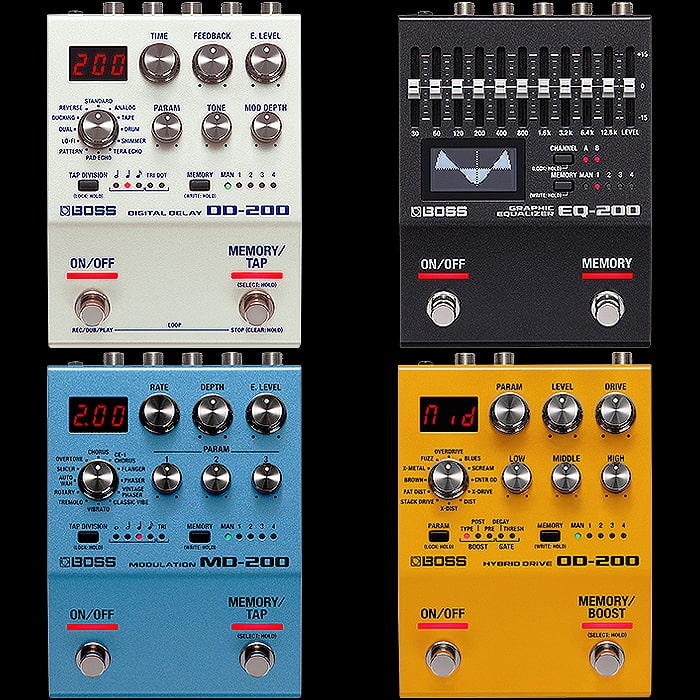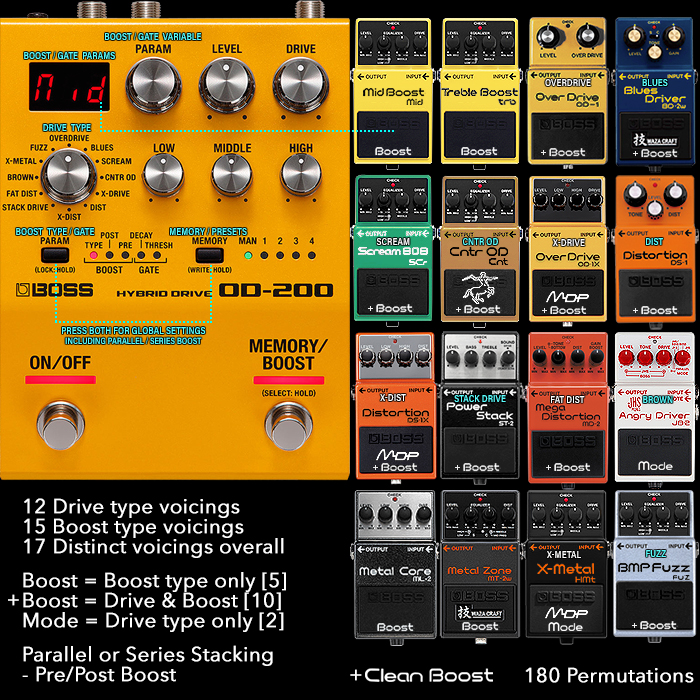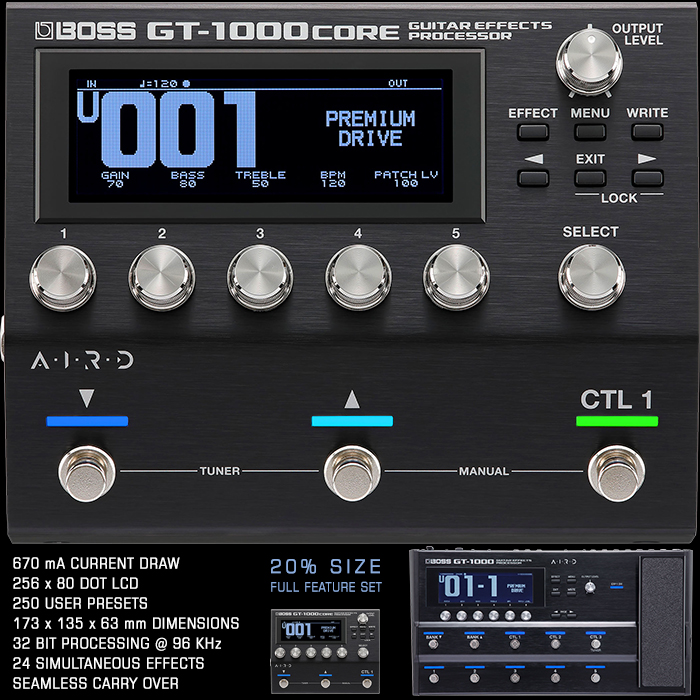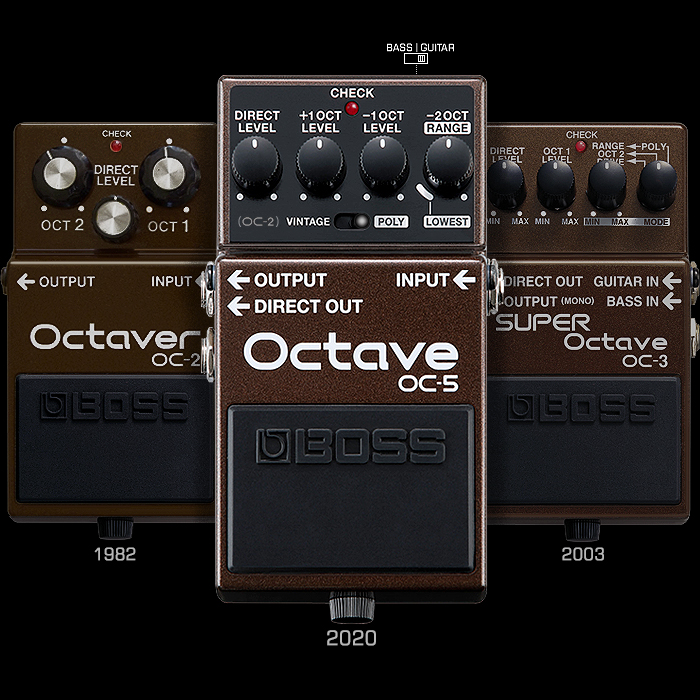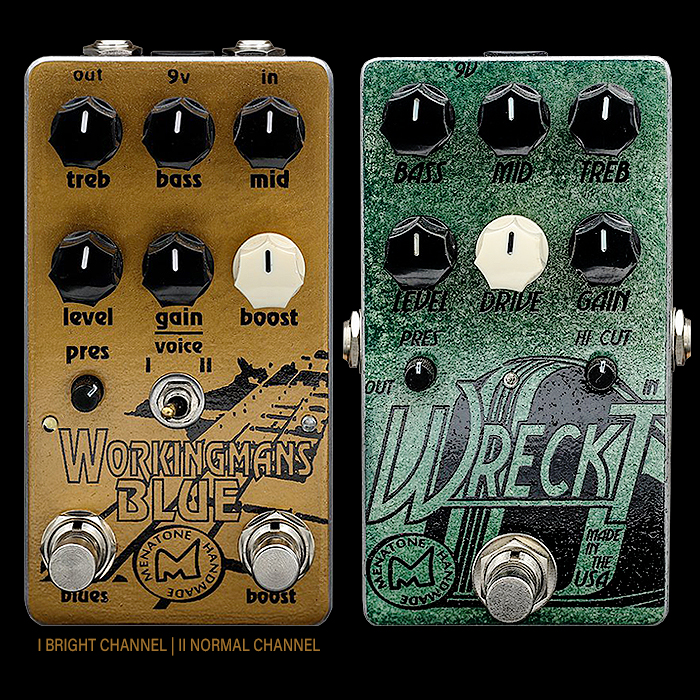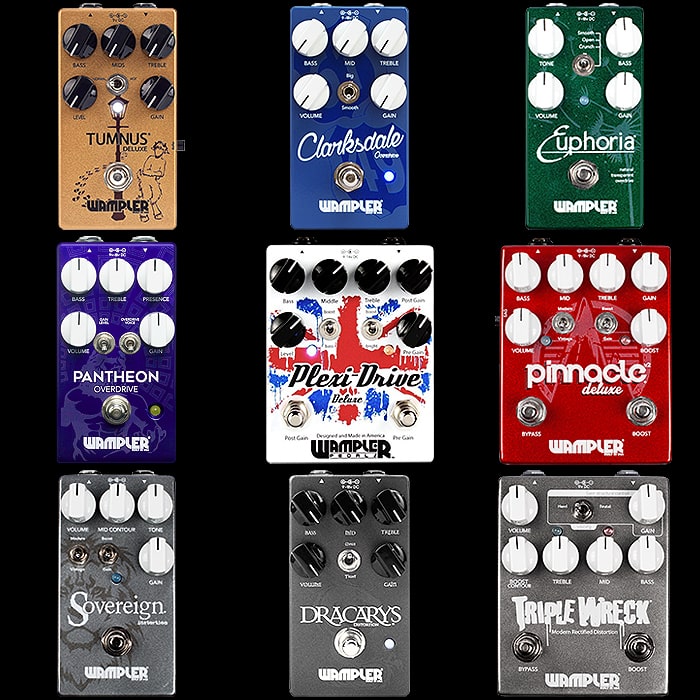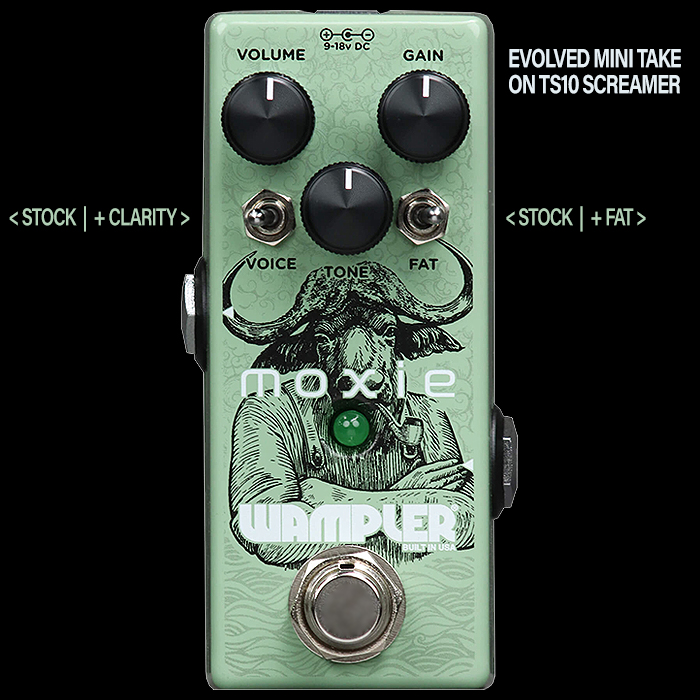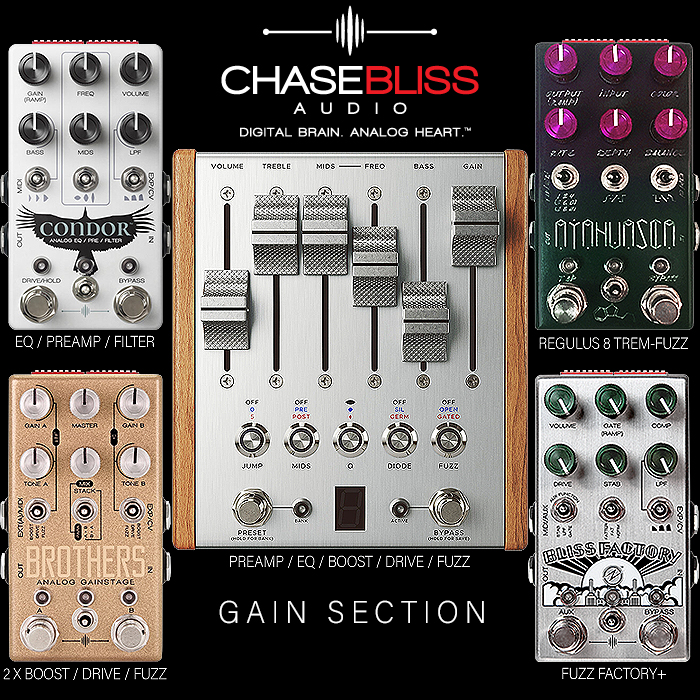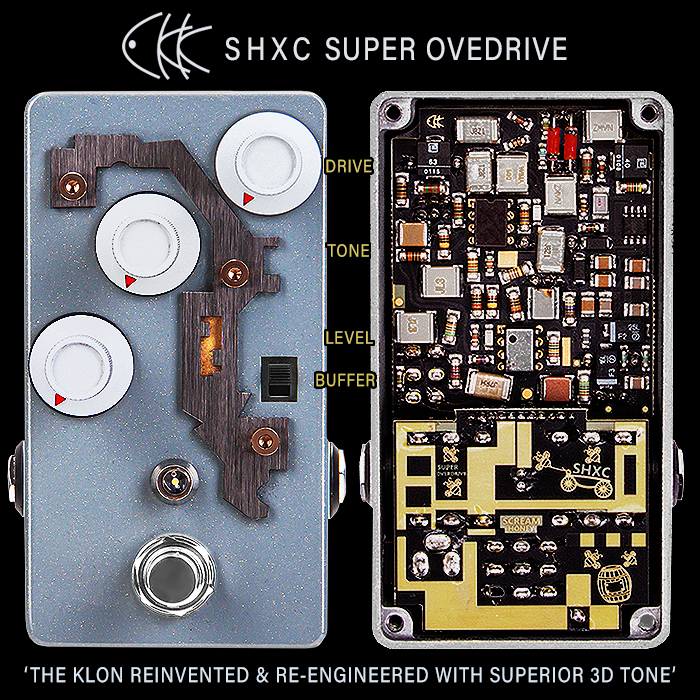6 of the Best All-Rounder Relatively Compact Dual-Channel / Multi-Voice / Multi-Drive Pedals
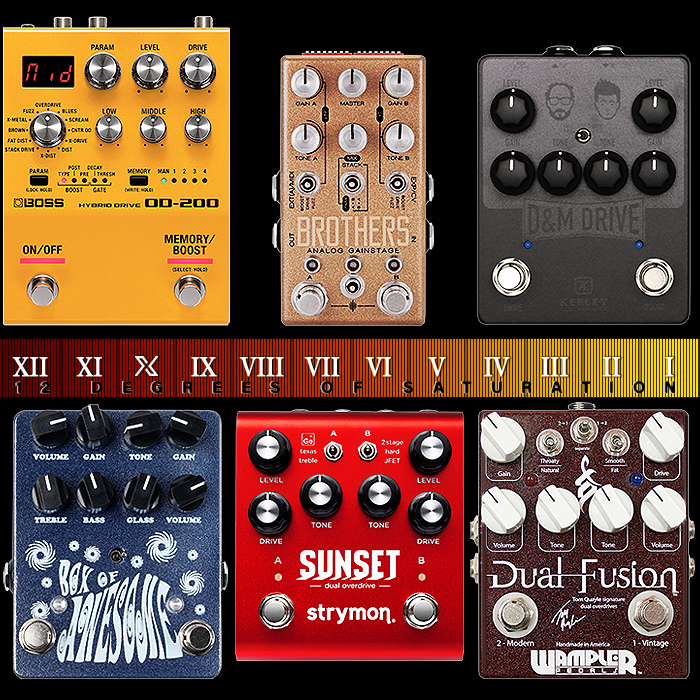
This article was triggered by a question from Ryan C who wanted my take on the Boss OD-200 vs the Strymon Sunset - and why the latter was a more permanent part of my own pedal-chain versus the seemingly more capable and full-featured OD-200 - which I will endeavour to answer here as best I can.
I decided to widen the selection as far as possible and get in a few more alternatives for sake of comparison - while that task proved a lot tricker than I had foreseen. The key criteria were to have two stackable channels that could achieve a significantly extended range of drive voicing coverage - while keeping to the same form factor as the OD-200 and Sunset - so medium-vertical enclosures and below.
Turns out that there really aren’t that many pedals that fit the criteria - there’s a lot more PreAmp or Drive + Simple Boost pedals out there - with limited voicing variations - and no multiple drive stacking combination potential.
The list is arranged alphabetically around the 12 Degrees of Saturation bar, as this article does in fact tie significantly into those criteria too - and exactly what specific range of gain and drive voicings you are after. All of these pedals have different degrees of range and variety - with the OD-200 the most potent, and the D&M the simplest of these examples.
I peg size as a a major criteria here - as many of us like to have extended pedalboards with as many different flavours as possible really - which means that size of enclosure is a key enabling factor. I’ve said many times how the compact format - like the CBA Brothers here (in dual-footswitch format) is my favourite form-factor of all - while the Vertical-Medium enclosure sort of ties with the Mini for my second choice - depending on context and application.
For this reason I’ve selected the older variety of Wampler Dual Fusion - as the newer version is horizontal - therefore occupying a wider footprint which means it does not qualify for this selection. Note also that there are several versions of Lovepedal’s Box of Awesome - in different colourways - and each is composed of a different combination of circuits. Here we have a mix of the OD Eleven and Kalamazoo.
All these pedal are greater than the sum of their parts and the clever selection and combination of circuits is perfectly chosen for complementary tonal profiles which fill-in, enrich and enhance the tonal spectrum. I have though also often noted about the cleverness of a pedal’s core tone stack - and exactly how smartly those default setting, ranges and tapers are calibrated. For lots of these key circuits the magic is what happens with the in-between frequencies - or lower and upper mids, versus straight-up low, centre-mid and high frequency bands.
I feel all of these are truly great sounding pedals and are capable of going tastefully from a whisper to a scream - while some here scream louder or more elegantly than the others.
It’s important to say too that the core internals and tone ingredients are only part of the experience - how easy and practical things are to dial in and tweak - and replicate are equally important for the long-term enjoyment of a pedal. For me practicality and versatility is key too - and oddly the highly capable Boss OD-200 stands out in being the only one not to have fully independent Channels. The right-hand boost/modes channel of the Boss can only be operated in conjunction with the main Drive Channel - which means 2 states by default - left-channel, and both, while all the others have 3 states by default - left-channel, right-channel and both.
There’s a lot more here too about the character, timbre and texture of each drive voicing - and how closely that may match your existing favourite stand-alone pedal type for that voicing. Some pedals have a tendency for more open granularity and warmer more elastic texture, while others can be harder, denser and more unyielding. There is also the key concept of core signature tone - which most of the great circuit designers have - I for instance can invariable recognise a Björn Juhl or ThorpyFX pedal by key characteristic frequency profiles for upper mid and high frequencies.
For sake of benchmarking - we also try to align voicings here with their closest well-known genre reference example or alternative - so that you can compare like with like as near as possible.
A final point is that 3 of these drives all came on the market at a very similar time - as covered by my article ’2017 Guitar Pedals seem to be all about Dual Action Effects’. I acquired the Strymon Sunset first, and then the Brothers a month or two later - and always intended to get the D&M Drive too - but it never happened, and I realised that it was largely another variety of the same formula as Analog.Man’s King of Tone which I already have too. In fact this article seems pretty apt really as I went on to acquire 6 of those pedals featured - the BYOC Crown Jewel, CBA Brothers, Diezel VH4-2, Empress EchoSystem, Source Audio Ventris and Strymon Sunset - all of which remain firm favourites of mine while some are currently out of rotation as such - with actually the CBA Brothers, Source Audio Ventris and Strymon Sunset being part of the current chain - although I am 100% likely to be rotating the new EHX Oceans 12 Dual Channel Reverb onto the #39 slot currently occupied by the Ventris.
Here follow some more details about each of the above pictured examples :
Boss OD-200 Hybrid Drive Multi-Drive - £219
The OD-200 was the 3rd of these devices I acquired. If you haven't read my piece about my Long-term in-depth analysis of the OD-200 you should probably start there, that article covers a lot of ground - that I can't possibly accommodate into this shorter comparative overview format - but I will do my best to highlight the key findings. Whenever a new Multi-Drive appears I always try to see how closely I can tune the new device to my favourite analog pedals - with the view that I can substitute the one new device for several of the individual pedals in my chain. On each occasion still though I have been somewhat disappointed that I was unable to achieve equivalency. This does not mean you don't get into a very usable and actually great sounding and in-touching-distance voicing. Yet there is always some significant part of the character of the favourite pedal missing.
I noted that with the OD-200 that the core tonal / frequency profile tended towards harder clipping and harder/denser tonalities versus the often warmer, more open-pored elastic nature of my favourite pedal/s. Something that could be to a degree solved with Parametric Mids in combination with Q-Bandwidth control - like on my BYOC Crown Jewel. Most noticeably for me is a marked difference in dialling in lows in particular - in that in a lot of my favourite overdrives the lows are warmer and more elastic - more resonant, while the OD-200 lows come in much harder and punchier in contrast - even without the gate. You can also notice that when you compare say the Boss BD-2 Waza with the my Keeley Modded BD-2 - in that the low-end frequency response has a markedly different character. Boss is often critiqued for having a slightly sharp / fizzy high-end too, which modders then do soften and shelve to a degree for more ear-friendly tones. I feel that there are numerous voicings here that are particularly strong - for instance the Big Muff Voicing of the Fuzz type I found pretty exceptional. In fact my favourite modes on the OD-200 are the Overdrive (OD-1), Blues (BD-2), Cntr OD (Klon), Dist (DS-1) and Fuzz (Big Muff). The OD-200 does all those with aplomb. I did though have issue with the tapers on some of the dials - in particularly say the 'Drive' control for Fuzz which has a really odd taper on it and goes from nothing straight into a medium gain fuzz - which means I am unable to achieve any of those specific lower gain fuzzy-drive sounds I so like - but that is fairly typical with most of these types of pedals.
I generally found that all the voicings are distinctly different and clearly sound like the genre they are supposed to represent. Dialling things in can be slightly tricky though, and the 3-Band EQ can be very sensitive. There was no voicing here I actively disliked, but only a little over half of these voicings properly gelled with my preferences - and in those areas I actually still prefer my stand-alone originals or modded varieties thereof.
There are certain idiosyncrasies in the pedal's operation too which lead to some degree of frustration, and which undermine very slightly the overall enjoyment of this pedal. Chief amongst those sins are the somewhat clunky controls for the really superbly capable Boost Channel - I just feel that all that could be designed in a far more usable/controllable fashion - and the need to dive into sub-menus to change the stacking from Series to Parallel is just plain clunky and an unnecessary pain - it should really have a 3-way toggle switch or separate mode button like the best of the alternatives have. The biggest sin here though is that you can't operate the two channels fully independently which I do quite a lot with my pedals - in fact I use the Boost elements of the Sunset and Brothers on numerous occasions - which you just can't do with the OD-200.
So in short - the scope and variety covered here are phenomenal - while the overall usability, dial-ability and versatility really aren't quite as impressive as they should be. I still use this pedal a lot on the rotation and I still love many aspects of it, but it is not overall as satisfactory an experience as is deploying the CBA Brothers and Strymon Sunset - which is why they are the more permanent fixtures in my rig.
Here follow all the incredible different flavours you can use in combination - 12 Drive Types and 15 Boost Types :
DRIVE TYPES :
- Overdrive - based on Boss OD-1 OverDrive
- Blues - based on Boss BD-2 / BD-2W Blues Driver
- Scream - No direct Boss Tube Screamer equivalent - based on TS808 style circuit
- Cntr OD - No direct Boss Klon Centaur equivalent - based on Klon Centaur circuit
- X-Drive - based on Boss OD-1X OverDrive with MDP Multi Dimension Processing DSP
- Dist - based on Boss DS-1 Distortion
- X-Dist - based on Boss DS-1X Distortion with MDP Multi Dimension Processing DSP
- Stack Drive - based on Boss ST-2 Power Stack
- Fat Dist - based on Boss MD-2 Mega Distortion
- Brown - based on JHS Angry Charlie side of Boss JB-2 Angry Driver
- X-Metal - No direct boss X-Metal equivalent - metal-style circuit with MDP Multi Dimension Processing DSP
- Fuzz - No direct Boss Big Muff Fuzz equivalent - a suitably beefy versatile Big Muff voicing
BOOST TYPES :
- Mid : Mid / Solo Boost
- CLn : Clean / Transparent Boost
- trb : Treble / Bright Boost
- oVd : OVERDRIVE Mode (OD-1 OverDrive) as Boost
- bLS : BLUES Mode (BD-2 Blues Driver) as Boost
- SCr : SCREAM Mode (TS 808 style) as Boost
- Cnt : CNTR OD Mode (Klon Centaur) as Boost
- Hdr : X-DRIVE Mode (OD-1X OverDrive) as Boost
- dSt : DIST Mode (DS-1 Distortion) as Boost
- HdS : X-DIST Mode (DS-1X Distortion) as Boost
- StK : STACK DRIVE Mode (ST-2 Power Stack) as Boost
- FAt : FAT DIST (MD-2 Mega Distortion) as Boost
- MZn : MT-2 Metal Zone as Boost
- MCr : ML-2 Metal Core as Boost
- FuZ : FUZZ Mode (Big Muff style) as Boost
Chase Bliss Audio Brothers Analog Gain Stage - £349
This was my second acquisition of those featured. I had a really tough deliberation between the Brothers and the Strymon Sunset which came out at very similar times. I decided eventually that I would likely prefer the combinations provided by the Sunset - before I came to realise that the Brothers was equally essential, if not more so in some ways.
An interesting distinction with the Brothers is that I actually use it primarily very much as a fuzz - with always one of the fuzz voices present - blended with the Boost, Drive or Fuzz on the other side. You will note that I classify the Brothers mostly as a fuzz on this site - and for good reasons really. The pedal is split by A & B Channels - the left A Channel provided by Resonant Electronics Designs / Field Effects - where the JFET-based circuits for Boost, Drive and Fuzz are based on their own much celebrated but long since discontinued Graviton Boost, Manifold Drive and Acceleron Fuzz. When you wind the drive up that can sound very wired and fuzz-like in and of itself, and its character is not altogether dissimilar to a Crowther HotCake. Resonant Electronics Designs' JFET circuits were derived from an asymmetrical clipping power amp circuit of an old film projector - not entirely dissimilar to how Walrus Audio's 385 Overdrive came about.
The left-hand A Channel is rather more compressed in character - and generally more transparent on the Boost and Drive. Joel Korte designed the TL072 OpAmp-based right-hand B Channel to be as complementary as possible to the JFET frequency profiles. Hence the OpAmp / IC circuit is more open, aggressive / beefier and mid-pushed generally with more bite, and also more low-end present as you crank up the gain. I consider it very similar in approach to the Sunset - albeit with more fuzz-leanings obviously - both have 3 voicings per side - including 2 different flavours of boost, and you can stack both either way in series as well as in parallel - something only the Boss OD-200 can do comparatively too - but the others not (i.e. parallel mode). I find that the Brothers and Sunset are really 2 very complementary pedals based around the same ideals - and both have been essential in my rig since I got them. Here are the voicing options for each of the sides / channels :
Channel A / Left - Resonant Electronics Designs / Field Effects JFET Circuit
- Boost - based on Field Effects Graviton / Clean Boost
- Drive - based on Field Effects Manifold / similar to Crowther Audio HotCake style tones
- Fuzz - based on Field Effects Acceleron - Highly Versatile Fuzz which delivers Tone Bender, Fuzz Face and Big Muff style tones based on how you set the Gain and Tone dials
Channel B / Right - Joel Korte TL072 OpAmps Circuit
- Boost - Mid-Hump Boost / Tube-Screamer
- Drive - Klon / Tube-Screamer / Blues-Breaker Territory
- Fuzz - Beefy Big Muff Style Fuzz
Keeley D&M Drive Signature Dan Steinhardt and Mick Taylor TPS Dual Drive - £229
This pedal has always been down on my 'nice-to-have' wishlist, while I seem to occasionally forget that this is actually based really quite closely on the Analog.Man King of Tone in many ways - with the combined tone-tweaking prowess and experience of Robert Keeley, Dan Steinhardt and Mick Taylor combined. It came out at about the same time as the CBA Brothers and Strymon Sunset - both of which I somewhat preferred then. I latterly acquired a JHS 4-Star Modded Analog.Man King of Tone which has the internal Drive mode dip-switches and Presence trim-pots externalised - which means I already have the best available and most versatile version of that pedal as far as I'm concerned - even though of course this pedal is tuned slightly differently and there are some variances.
Structurally - the right-hand Mick Boost circuit is a TS808 variant - no doubt evolved from Keeley's own excellent Red Dirt circuit, while the left-hand Dan Drive circuit is a Blues Breaker variant - likely evolved from Keeley's well-respected 1962X circuit. That Tube Screamer + Blues Breaker combination is already legendary - as I covered in my recent 4-way Blues Breaker Head-to-Head - to which I then added the JHS Double Barrel - and to which I will also add this D&M drive - all 6 therefore great and viable options for that genre type.
As the recent That Pedal Show episode with Rabea demonstrated - the two channels can combine beautifully to get you well into proper High Gain territory, although if that is where you prefer to live, then the Boss OD-200 and Strymon Sunset will likely serve you better. In combining those two channel voicings in either-way series stacking you can really dial in a pretty vast array of gain and you have the ability to set up the pedal for 3 essential switchable playback modes. This is another great King of Tone alternative at heart - with a little more oomph on the gain range generally. I'd still quite like one of these for the collection as I'm a huge fan of both Dan and Mick and their That Pedal Show - but considering everything I have already, this really isn't an essential for me. Here follows a brief overview of the 2 core Channel voicings :
- Mick Boost right-hand Channel - Slightly Mid-Humped Lower Gain Boost - Klon / Tube-Screamer territory - evolved from Keeley Red Dirt
- Dan Drive left-hand Channel- Sort of gainer Blues Breaker / King of Tone derivative - evolved from Keeley 1962X
Lovepedal Box of Awesome (OD Eleven + Kalamazoo) - $210
This was the last pedal to be added / chosen for this selection - and the number of Box of Awesome variants somewhat confused me initially. Structurally this isn't altogether dissimilar to the D&M drive apart from that we have 4 control knobs per channel rather than just the very standard 3 of Volume, Tone and Gain. In this instance the left-hand channel is the Lovepedal OD Eleven pedal which is a sort of slightly more vibrant Timmy style pedal, while the right-hand side is the Lovepedal Kalamazoo - a very heavily modified Tube Screamer variant with magical 'Glass' tone control knob which adds highs while preserving lows at the same time.
The Timmy + Tube Screamer combination is just as effective as the Blues Breaker + Tube Screamer blend - both of those circuit mixes have the same affinity for each other and cleverly fill out an enhance each other's frequency profiles. The above demo excellently captures the dynamics of this pedal, but the player is firmly wedded to low and medium gain playing styles so we don't get to witness quite how high the gain ranges. But anyone who has used a Tube Screamer and Timmy combination should be in a good position to gauge the ballpark potential. Like the D&M Drive this has an either way series stacking selector toggle-switch - which I believe all of these pedals should have right on the surface - and which the Boss OD-200 and Strymon Sunset could definitely improve on - although the rear-side of the latter is not too bad a positioning - is just isn't immediately visually obvious - which gets a demerit in my book!
I actually really like what I've heard of this pedal, and this is another on my nice-to-have wishlist - possibly just one rung above the D&M drive as I already have a King of Tone - but I don't exactly have this specific pedal / circuit combination in said format. Here follows a brief overview of the channel voicings :
- Left Side - Lovepedal OD Eleven - in similar territory to Paul Cochrane's Timmy - but warmer and punchier
- Right Side - Lovepedal Kalamazoo - heavily modified Tube-Screamer style circuit with smart 'Glass' tone control control
Strymon Sunset Dual Overdrive - £299
This was the first in this selection that I acquired and I still use it extensively in my chain - but probably not necessarily how you might think! In fact the voicing I use most is the Treble Boost option on the left-hand A channel to further temper and enhance my fuzzes and distortions; and second to that I use the Clean JFET Boost on the right-hand B channel. This is one aspect I find pretty essential with these sorts of pedals - the fully independent ability of the channels - and it is something that Boss could definitely learn from for its OD-200.
Also - while I very quickly picked up a sort of 'hardness' characteristic in the core voicings of the Boss OD-200 and in its tone-stack, I find the Strymon Sunset much more evenly tempered - with slightly more warmth and openness of character throughout. You only get 6 voicings / circuit emulations here in total - but there is plenty of variety in how you mix them up in series and parallel. And I find that I really like all of the voicings here - mostly in their combined usage, as I still prefer my single pedal analog originals to the Strymon variations - but I'm still very happy with the nature and character of these drives - and their dynamics, which I believe Strymon has captured and calibrated really excellently. Generally my usage here is either quite subtle and boosty, or full-on high gain saturation utilising either the 2Stage or Hard clipper in combination with Ge Drive or Texas. Here follows a brief overview of the channel and mode voicings :
A - Side / Left
- Ge - Germanium Diode Clipping / Klon style voicing
- Texas - Modded TS808 style voicing
- Treble - JFET Treble Booster with low-end shelving via Tone control
B - Side / Right
- 2Stage - Soft, then hard clipping like the Barber Direct Drive, Mad Professor Sweet Honey, and Wampler Euphoria - slightly Dumble-ish to a degree
- Hard - Classic Hard-Clipper - like a ProCo Rat, Boss DS-1, and MXR Distortion+
- JFET - Clean boost through to soft, warm low-gain overdrive
Wampler Dual Fusion V1 Signature Ton Quayle Dual Drive (Paisley Drive + Euphoria)
This is another winning combination, with a heavily modified TS808 style circuit on the left channel and a Dumble-style circuit on the right channel - and it is every bit as successful as the Blues Breaker + Tube Screamer and Timmy + Tube Screamer variants already mentioned in this feature. I'm a long-time fan of Tom Quayle, his style of playing and ear for tone - and this pedal is the perfect tool for his craft. It's evident that he worked long and hard with Brian Wampler to get his exacting variations on Brian's Paisley Drive and Euphoria Overdrive circuits - the variants found in this pedal are quite unique and distinct from those stand-alone originals - with very particular unique mode selections made just for Tom.
I've selected the Version 1 as it fits the prescribed format, where the V2 is landscape; I would personally only go for this variant of the pedal as I find its form factor infinitely preferable and more accommodating. It has the either-way series toggle in the centre and then dual 2-way mode switches for either channel. The settings are somewhat diagonally aligned as for the Paisley Drive we have Throaty and Natural (Smoother) while for the Euphoria Side we have Smooth and Fat. So both sort of Smooth and Full-on modes, but either way around - I don't know why both the Smoother modes aren't aligned to the same side - i.e. Top - that would surely be more logical. I also keep getting caught out by the blue LED, as the Paisley Drive is a blue colour-way in its stand alone enclosure - but here it's represented by the red LED - I personally would change the LEDs to Blue and Green to represent the originating pedal colour equivalents, and I would flip the mode order on the first channel to Natural then Throaty. Other than that this is another fantastic example of an extended range drive pedal - which has you covered in most scenarios. I feel both the Dual Fusion and Box of Awesome have a slight advantage over the D&M drive - while on the D&M drive you can uniquely use TRS cables on the input and output to effectively separate the channels if you are using a midi switcher or equivalent - not really a feature that I would use - and thus for my purposes the D&M overall has the least appeal for me - also based on the context of my existing collection / selection. Here follows a brief overview of the channel voicings :
- Left Side - derived from Paisley Drive - highly modified Brad Paisley TS808 derivative with much greater versatility
- Right Side - derived from Euphoria Overdrive - Brian's celebrated Dumble-Style circuit
Final Thoughts
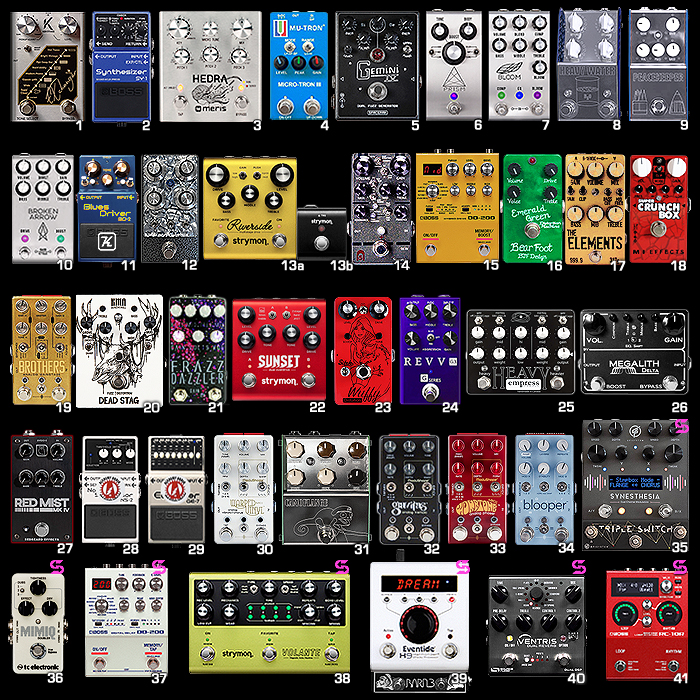
It's not entirely fair to arrange these in a pecking order as these are not entirely the same thing really - and note that any such order is purely based on my preferences, and own context within a collection of around 450 pedals - so take all of this with the usual pinch of salt. I also really don't want to be negative towards any of these as they are all exceptional tone machines - and really would not want to do them a disservice.
You would have to say that overall the most varied and capable pedal here from a voicings perspective is really the Boss OD-200 with its 12 Drive Voicings and 15 Boost types - nothing else comes close for that degree of variety. But the Boss is somewhat flawed in several ways as far as I'm concerned - to what exactitude depends entirely on your own sensibilities, but I found it somewhat fiddly and frustrating to use at times, and some of the ways it's set up to operate really are sub-optimal. Also, even though it really doesn't have any sort of brittle hybrid/digital character, it nevertheless has a discernibly hard-leaning characteristic for me which I was unable to dial out entirely. This impacts on several of the core voicings, and the tone-stack in particular. Regardless of all that though - this is a hugely impressive pedal, and easily the most capable overall in this category - but it gets several demerits for some of its usability issues - the fact that it only has 4 onboard presets, and the fact that you can't use its two channels independently - as I've shared with Boss - those are issues that really need to be overcome for the V2 iteration of this pedal to truly shine. I feel there is probably much that could be updated with a firmware release. But to date the only change to firmware has been the addition of more midi-selectable presets (up to 128) - which of course requires additional resources / devices. So despite its smart array of features and variability - the Boss OD-200 only comes in 3rd here.
The one I actually use most is the Strymon Sunset - but to be fair that is mostly in a secondary Upstream / Downstream Treble-Boost and Clean Boost capacity. In terms of primary pedal usage the Chase Bliss Audio Brothers gets used the most of these - but then again I use it mostly as a Fuzz with variations of each or both of the Fuzz voicings in use. So I think that on balance the Brothers would take the 1st Place on the basis of its primary use, but again if you are chiefly considering Drives / Multi-Drives - then the first place logically has to be awarded to the Strymon Sunset. Both the Brothers and Sunset can be arranged each way in series or in parallel and both have incredibly strong and usable voicings on every slot - so the winner here overall kind of has to be Sunset I suppose - based on those criteria.
For the remaining trio I would probably place the D&M Drive the least appealing here for my preferences - but that is within my own context, and the fact that I already have the JHS Modded Analog.Man King of Tone - which is really a very similar beast as has been explained. For the Lovepedal Box of Awesome and Wampler Dual Fusion - it's kind of an even split really where I usually can't decide either way. I know I prefer each of them to the D&M by some slight degree, but on one day or another it could definitely go either way.
All these pedals have had lots of care and attention lavished on them and hundreds of man-hours calibrating by ear and by feel. And never forget that when you acquire a pedal you are buying into a specific pedal-builder's tonal and hearing preferences. I like certain pedal builders because I appreciate their particular ear for tone and their attention to control calibration and all the little details overall. The roster of personnel involved here cannot be questioned, but you need to be aware that there are significant differences here in scope of technical challenges. And that the creation of the Boss OD-200 has taken a lot more resources to achieve - and in its V1 edition it's obviously still a little rough around the edges for me. In light of recent pedal developments - like Tom Majeski's brand new Cooper FX Arcades, and GFI System's Synesthesia - there are key usability innovations and enhancements at heart there which Boss could really benefit by learning from. Certain features and functions on the Boss are quite evidently too opaque and clunky for a fully satisfactory user experience - and those can and will be tackled in due time surely.
For the foreseeable future though I expect the Chase Bliss Brothers and Strymon Sunset to hold their places in my chain - while the Boss OD-200 will certainly see a fair degree of regular rotation. For the others here it depends largely on pricing and opportunity / availability. For instance I have featured the rarest Stealth edition of the D&M drive - which is the most attractive of its limited edition variations - If I were to see that or the Box of Awesome or Dual Fusion V1 going for reasonable pricing at around the right time - I may be tempted to add one or two more. In fact the most likely addition would be the Box of Awesome in line with my feelings right now - while tomorrow it may be an entirely different story. I certainly don't need all six of these - but one (or two) more would not go amiss. I often get asked if I could choose only one - which would it be, in real terms I find it very difficult to separate the Brothers and The Sunset - I consider both absolutely essential - If was forced to pick on the pain of death though - and based on my recent usage patterns - probably the Sunset just edges it - for my specific needs of course.
Post Script - one point I touched on but which I feel I need to reiterate is that of personal preference and suitability. Obviously if you live mostly in high gain and uber metal style voicings - then the OD-200 is totally the right choice for you - although for some the Strymon Sunset will go plenty high gain enough - as Rabea so aptly demonstrates above. Not all of these have exactly the same gain range or degree of punchiness or sort of modern mid-push. For more modern tight mid-pushed tonalities only the OD-200 has the 3-band EQ and the smart noise gate - so the Boss undoubtedly rocks the hardest, then the Sunset, and then it's much of a muchness for the other 4 - like I said from the start - they all can go from a whisper to a scream - but it depends how much of it you want, and how much control and variety you need.

